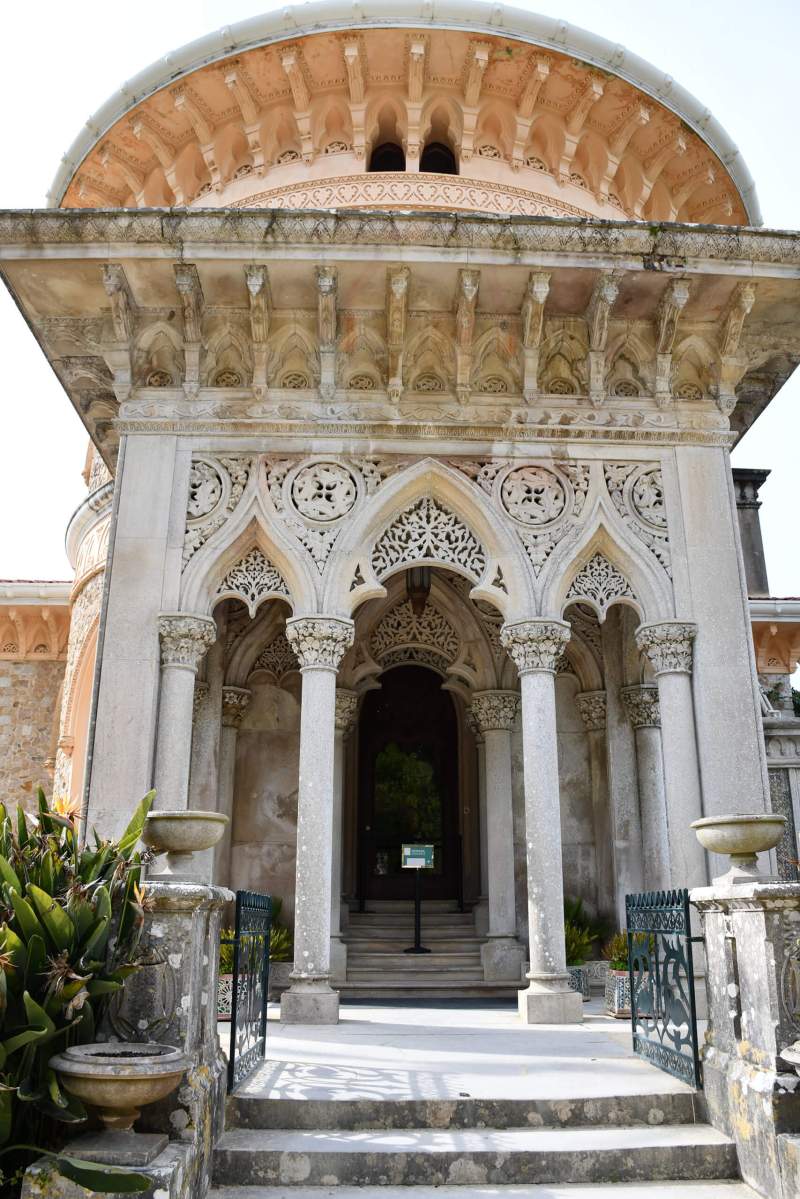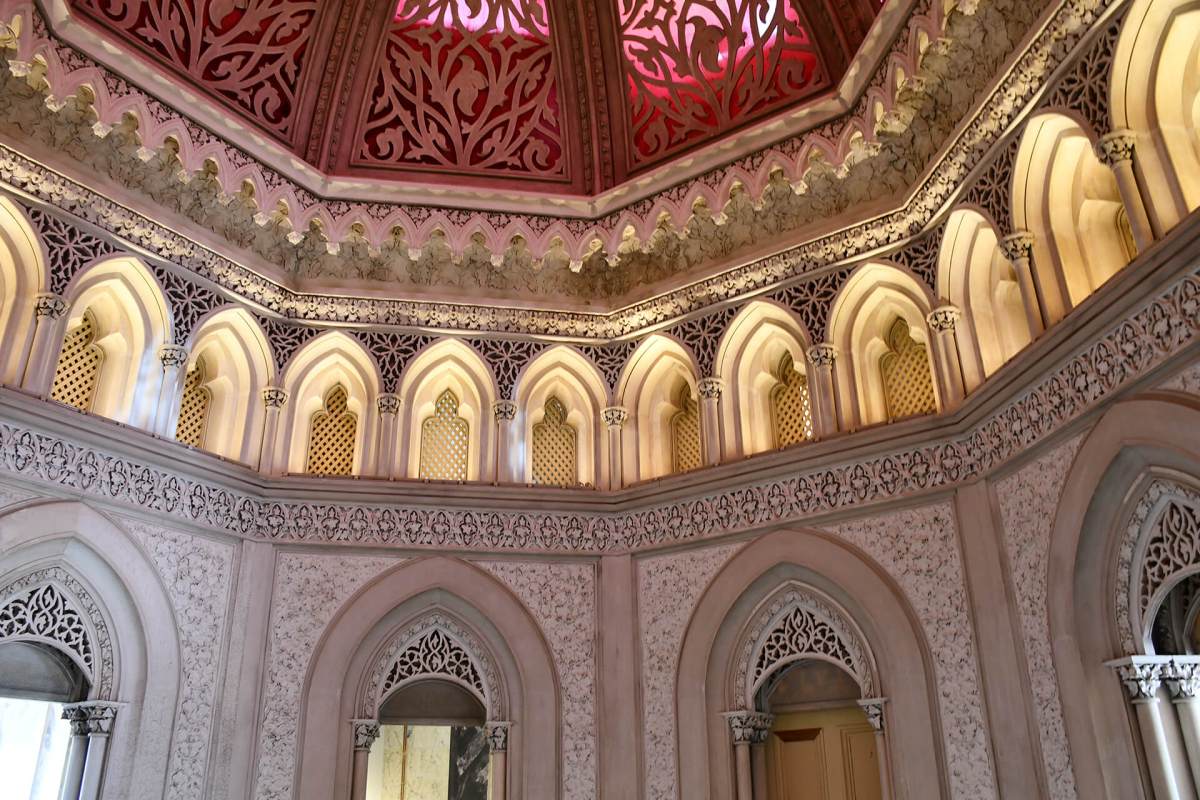Sintra: Like A Fairy Tale

Our last adventure in Portugal was a train trip to Sintra. We’d read a lot about it, but nothing prepared us for the reality. We went on a Thursday in April and, to start, were rather surprised at how crowded it was.
What surprised us even more was the magical quality of the buildings we toured. We began with the Palacio Nacional de Pens, which could have been a castle out of a fairy tale. It sits high on a hilltop — we wondered if the bus we took would even make it up the hill. And the bus is really a necessity, unless you have a car or are a very ambitious hiker.
For admission, we bought a multi-tour ticket right across from the train station — it included bus rides, and we could have seen three places altogether, but between the crowds at the Palacio and our lingering enchantment at our next destination, we ran out of time.
But back to the palace — it’s a UNESCO World Heritage Site and is classified as a 19th-Century Romantic-styled building. The vividly painted palace was commissioned in 1842 by King Ferdinand II, who ordered that the palace be like a scene from an opera. It boasts gargoyles that peer down over the main entrance of the ornate structure. The interiors are also extravagant, with highly decorated ceilings and artwork throughout. And the kitchen is large enough to hold a ball in!
But, despite its luxury, we didn’t find it half so enchanting as the second palace we visited in Sintra — another long bus ride away, down the mountain and up another hilltop. We happily left the crowds behind as we headed to the Palacio de Montserrate. But first, we took a leisurely stroll through its lush gardens before arriving at the small jewel-like villa they surround.
According to legend, Montserrate was the site of a chapel built circa 1033, with another chapel build atop its ruins in 1540. In 1789, a neo-Gothic house was built over the ruins of the two chapels and in 1793, its lavishly landscaped gardens began to take shape and were referenced by Lord Byron in “Childe Harrold’s Pilgrimage.”
In 1856, Francis Cook, a wealthy English merchant, purchased the property in 1863 and started to work with the architect James Knowles on the remains of the house. Its design is influenced by Romanticism and Moorish Revival architecture. There is also a decidedly Moorish flair to the Palacio de Pens — the Islamic architectural influence reflects that the region was a part of the wider Muslim Gharb Al-Andalus until the 13th Century.
In 1995, Sintra Hills, including the Park of Monserrate, was defined as a World Heritage Cultural Landscape by UNESCO. And in 2013, the Park of Monserrate was honored for “Best Development of a Historic Park or Garden” with a European Garden Award.
And it deserves it! The gardens were incredible and were the perfect lead-in to a very beguiling place. A goodly part of the interior seems to be made of lace . . . and striking vignettes are around every corner. Elaborate ceilings, columns, beautiful art . . . it was probably our favorite place of all in Portugal!
You can find lots more photos of Sintra at olddogsnewtrips.com. Please comment on our Facebook page — Old Dogs, New Trips, or contact us at olddogsnewtrips@gmail.com.





















